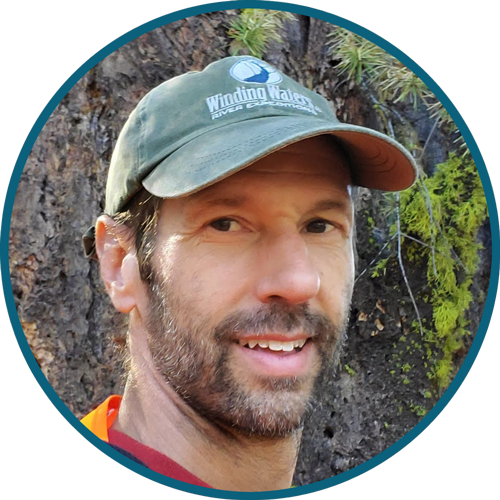Refugia of the Blues
Where Cold Water, Big Trees, and Resilient Systems Endure

7 pm - 9 pm
Water & Environmental Center
Walla Walla Comunity College Free & Open to All! Free Pizza
The Blue Mountains consist of a series of majestic ranges interspersed with remote valleys, rugged canyons carved by free-flowing rivers, expansive forests and grasslands, and rural place-based communities.
This complex and diverse landscape spans over 27,000 square miles, an area larger than West Virginia. The Blue Mountains stretch beyond northeastern Oregon’s borders to the Rocky Mountains of central Idaho, and north into southeastern Washington.
Few places in the US this large remain intact with the opportunity to protect vital habitats that support the movements of large mammals, migratory fish and birds—elk, moose, sockeye salmon, golden eagles—and also provide clean water, climate benefits, outdoor recreation, and jobs.
There is much at stake in this large, diverse region where big trees are crucial for carbon storage, mountains supply the region’s water supply, and forests stretch from the Cascades to the Rockies forming a wildlife corridor of continental-scale importance. But the region lacks a holistic conservation vision that responds to the threats this area faces.
David will speak to you about the importance of Public Lands as part of a vision to secure the Blue Mountains as key refugia values; movement and rewilding, clean cold water, forest habitat, and fire refugia during this time of rapid change.
Painting by Robin Coen: "Microrefugia for Salamander".

Dr. David Mildrexler
David is US Director of Science and Policy with Partnership for Policy Integrity. He is an ecologist with over 20 years of experience living and working in the Blue Mountains on ecological research and efforts to advance science-based policies in Public Lands management.
His research interests include ecosystem climate interactions, particularly forest carbon and water cycles, climate change resilience, big trees, old-growth forests, intact forest landscapes, and large-scale conservation efforts. He works with a diverse group of scientific, conservation, Land Trust, Tribal, and Agency partners.
He is a 2015 Wilburforce Fellow in Conservation Science and a 2022 AGU Voices for Science advocate. He holds an M.S. in Forest Science from The University of Montana, and a PhD in Forest Ecosystems and Society from Oregon State University.
